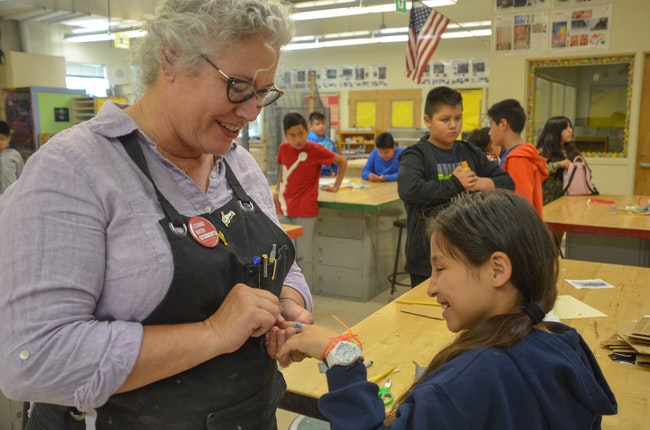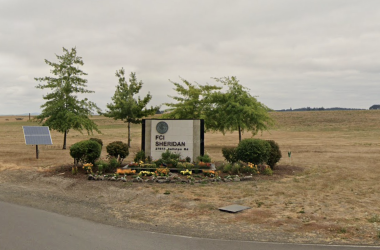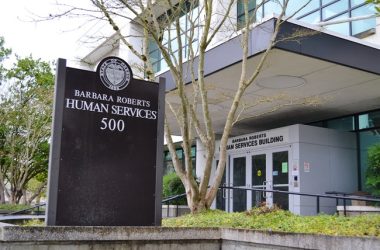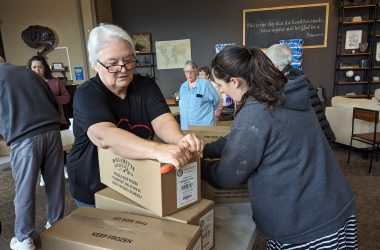 Art teacher Brenda Dobbins slides a ring made of a recycled seltzer can onto the finger of Leslie Villaseñor, a 6th grade student at Leslie Middle School, during art class at 2019 migrant summer school. (Rachel Alexander/Salem Reporter)
Art teacher Brenda Dobbins slides a ring made of a recycled seltzer can onto the finger of Leslie Villaseñor, a 6th grade student at Leslie Middle School, during art class at 2019 migrant summer school. (Rachel Alexander/Salem Reporter)
More than 200,000 Oregon kids who want to enroll in an after school program can’t because of cost or lack of nearby programs.
That means many of the kids who have the most to gain academically from such programs can’t access them, according to a report released Wednesday by Oregon ASK, a nonprofit organization that advocates for learning opportunities for kids outside the school day.
“It’s not achievement. It’s an opportunity gap, straight up,” said Rep. Barbara Smith Warner, a Portland Democrat, who co-chaired a legislative committee on student success last year, at a news conference Wednesday.
She said she hoped the report would prompt Oregon school districts in the process of deciding how to spend additional state funding next fall to consider after school and summer programs.
“People don’t think about this as a way to close opportunity gaps,” she said.
In focus groups and surveys of Salem-Keizer parents, students and educators, before and after school programs ranked high among priorities for spending that money.
The report is based on two years of research across Oregon, surveying students, parents and after school program facilitators.
Researchers found most of Oregon’s 1,200 after school programs offer academic support and activities like science, technology and art and serve 91,000 kids. Kids enrolled said the programs helped them in school, with Latino and black kids especially likely to report improvement. Students also said programs helped them try new things and form positive relationships with adults.
But far more kids who want to do something after school aren’t able to. Cost was the most common barrier researchers found.
While about half of available programs are free, the report found fees for others can be substantial. The average cost for a monthly program was $200 per month per child, a cost that’s especially difficult for parents with multiple children.
And those costs can climb for specialized programs, like those for kids with disabilities.
“We only need to donate blood, liver and kidneys to be able to pay for all summer,” one parents quoted in the report said about enrolling her autistic children in a therapeutic summer camp.
Parents cited cultural barriers as an obstacle nearly as often as cost, particularly for Spanish-speaking parents. Parents may not hear about programs, even when materials are offered in Spanish, because they’re not part of the “word of mouth” circles programs often use to advertise. Some reported program staff made them feel unwelcome or avoided talking to them.
After school programs are not spread evenly around the state. The Salem-Keizer school district has 66 after school programs, while many districts in central and eastern Oregon have none or only one.
Even where programs are available, they may be full.
Beth Unverzagt, Oregon ASK’s executive director, said her hope is for the report to prompt discussion among businesses, existing after school programs, school districts and others about how they can better serve kids.
“Oregon needs to get on board,” she said.
Contact reporter Rachel Alexander: [email protected] or 503-575-1241.

Rachel Alexander is Salem Reporter’s managing editor. She joined Salem Reporter when it was founded in 2018 and covers city news, education, nonprofits and a little bit of everything else. She’s been a journalist in Oregon and Washington for a decade. Outside of work, she’s a skater and board member with Salem’s Cherry City Roller Derby and can often be found with her nose buried in a book.









